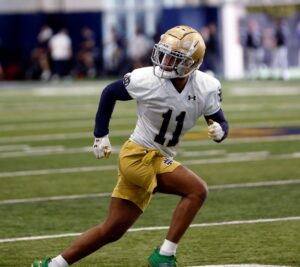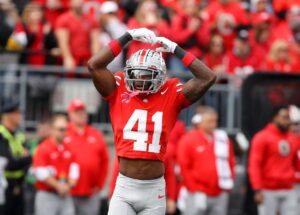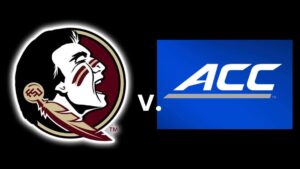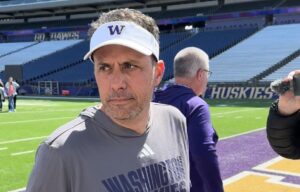The West Virginia Mountaineers open the 2018 football season against Tennessee in Charlotte in less than fourteen days. Patience wears thin, and the hype continues to build. This series, broken into three parts, makes five bold predictions for the Mountaineers this season. The first three bold predictions are here, in Part One. This article covers bold prediction number two for the West Virginia Mountaineers.
#2: The Mountaineers Put a Top 30 Defense on the Field This Season
Last Season – The Statistics
Many fans viciously condemned Defensive Coordinator Tony Gibson‘s unit during the 2017 campaign. Criticism has not waned since. The defense had a poor season statistically with few bright spots. Continuing the trend since Gibson returned to Morgantown, the defense performed well on third down conversion rate (24th overall), defensive touchdowns scored (21st overall), and tackles for loss (44th overall). Unfortunately, the chart below shows that the Mountaineers performed poorly in all other notable categories.
| Sacks | 72nd |
| Red Zone Defense % | 79th |
| Pass Efficiency Defense | 90th |
| Scoring Defense | 90th |
| First Down Defense | 95th |
| Yards Per Play | 96th |
| Rushing Defense | 103rd |
| Turnover Margin | 105th |
| Total Yardage Surrendered | 106th |
| Fourth Down Conversion % | 125th |
Yet, as poorly as the defense performed, there is one critical statistic that is not on the defense alone and that is time of possession. Yes, despite the Mountaineers’ offensive proficiency (9th in scoring prior to Will Grier’s injury and 7th in yards prior to Grier’s injury), the Mountaineers finished the season at 116th overall in terms of time of possession. Simply, the defense was on the field a lot.
Last Season – The Culprits
Time of Possession
Often times, the defense started games relatively strong only to show signs of fatigue beginning in the second drive of the second quarter. Statistically, this bears out. By quarter, the Mountaineers’ defense ranked as follows in terms of points allowed: 1st quarter – 45th, 2nd quarter – 104th, 3rd quarter – 113th, 4th quarter – 95th. Per half, the Mountaineers’ defense finished the reason ranked 85th in terms of points allowed in the first half, and 113th for the second half. On the other hand, in 2016, the Mountaineers were 60th in terms of points allowed in the first half, and 30th for the second half. Imbalanced time of possession mattered more as the game progressed.
Lack of Depth
As many fans know, West Virginia runs a 3-3 stack base defense. The defense requires three defensive linemen, three linebackers, two cornerbacks, and three safeties. Unfortunately, the Mountaineers only had a true two-deep rotation at one position group last season. That group was cornerback. The Mountaineers only ran four linebackers, five defensive linemen, and five safeties. Gibson said near the end of fall practice that he did not have eleven 11 players that he was truly comfortable with. Gibson openly proclaimed frustration with his lack of depth. Fans hoped this was simply Gibson trying to motivate his team.
In truth, Gibson rarely substituted a second player at any position without suffering a substantial drop-off in quality. This was particularly true at linebacker, where Brendan Ferns suffered a season-ending injury and Quondarius Qualls took several games to really get moving. As such, at a position of which Gibson demands plenty, the Mountaineers only saw four players get meaningful snaps. The lack of fresh bodies only magnified the time of possession issue discussed above.
Lack of Experience
The depth issue tells only part of the story. Gibson returned only four starters last season, and only three if you consider that David Long missed the first four games of the season. The Mountaineers returned only 35% of its production from 2016 in tackles and sacks. They returned only 15% of their production in interceptions. And they returned none of the defensive scoring production from the prior season.
To make matters worse, 2017 marked the second straight season that Gibson had to deal with an extraordinarily high turnover rate. Unlike 2016, Gibson didn’t have the same experienced depth to count on for leadership in 2017. This lack of experience showed on the depth chart.
On the defensive line, Gibson returned only two players who had meaningful production the year prior, and none of those players had starting experience. At the second level, Gibson returned two players with prior starting experience, but those were the only two players who had any meaningful experience playing FBS football at all. At cornerback, Gibson returned only one player who had meaningful experience. In fact, safety was the only position that returned depth last season.
This Season – The Improvements
The Attitude
Last season, the usual defensive swagger was missing. There were more questions than answers. There were very few outspoken vocal leaders. This year, on the other hand, the defense has much to prove. They have embraced the role of the disrespected and overlooked. While the attention remains squarely on the offense, the defense is getting angry. They want to prove everyone wrong, and they want to be the best defense in the country.
Dravon Askew-Henry and David Long have been the vocal leaders. Similarly, Reese Donahue has not shied away from the media. Donahue said that this is the closest he has felt to a team as a whole than at any other time in his football career. Askew-Henry and Long praise the newcomers. In drills, Kenny Bigelow, Darius Stills, and Dante Stills scream and push up the intensity. The result has been a unified and professional attitude that gives one the sense that there is simply something different about this season’s unit.
The Depth
Both Gibson and Head Coach Dana Holgorsen said the defensive line is the deepest either have had. Bigelow is now nearly two full years removed from the knee injury that hampered his career at USC. He has looked the part of his five-star, top-10 overall billing as a recruit. He has also displayed consistent tenacity and ferocity in line drills.
Stills effectively chased off Lamonte McDougle, a freshman All-American. Darius, by the way, does not intend to simply relinquish the starting tackle role to Bigelow. Donahue and Ezekiel Rose both return this season. Four-star freshman Dante Stills, younger brother of Darius, and Clemson transfer Jabril Robinson further bolster what appears to be the deepest unit on the defense.
Gibson will rely heavily on four bodies at the linebacker position until Qualls and Ferns return from respective knee injuries. Both are expected to return in mid- to late-October. In the meantime, Gibson would welcome added depth if at least one other player carves out a role.
The Mountaineers have rotated six cornerbacks this camp, not including the couple of safeties that can play both positions. Key names to watch here are Hakeem Bailey, Derrek Pitts, Joshua Norwood, and Keith Washington. Jake Long and Jordan Adams could surprise as well.
West Virginia also has significant depth at safety, with Askew-Henry, Kenny Robinson, Toyous Avery, and several others looking to rotate at the position. The staff identifies these players as the top three on the entire defense. And even if the Mountaineers suffer injuries at safety, they have several other competing for playing time. Kwantel Raines and Norwood could push for snaps here as well.
The Experience
In addition to depth, the Mountaineers also have much greater returning experience than last season. Gibson’s unit returns two starters on the defensive line, two starters at linebacker, one starter at corner, and three starters at safety. Outside of the third linebacker to start the season, Gibson also has players with significant experience at all other positions.
Unlike last season, the Mountaineers return 55% of its 2017 production in terms of tackles, 50% of its sacks and interceptions, and 65% of its defensive touchdowns. The last time the Mountaineers returned this much production was 2015 when they brought back just under 60% of their 2014 production. That was a top 45 unit, by the way.
The Efficiency
The defense may not have as much control over the time of possession statistic as some others, but it will be critical to how well the defense performs. As noted in part one, the Mountaineers are working to improve the time of possession. In particular, the Mountaineers relied too much on the long ball, had inefficiencies in the running game, and failed to convert on third down far more often than they should have.
Incorporating the tight ends will go a long way to fixing all of these issues. Offensive Coordinator Jake Spavital, who earned consistent criticism from Holgorsen last season, has another year to adjust his pass/run ratios and dial up more consistent and viable running plays. The offensive line has another year to gel behind its veteran leadership. As a result, the Mountaineer offense will push time of possession into a statistic that favors the Mountaineers.
This Season – The Prediction
The 2017 defensive deficiencies can be summarized into three categories. First, the Mountaineer defense was on the field too often. Second, when it was on the field, the defense did not get enough pressure on the quarterback. Finally, the defense missed too many assignments in the run game.
The offense will improve the time of possession gap. This will allow the defense to bring the explosiveness needed to engage the offensive linemen and open some holes. The improvement of second-year players Bailey and Pitts at cornerback will also give Gibson more freedom to bring pressure from his linebackers and safeties. As a result, the defense will create far more pressure than it did in 2017.
This freedom allows Gibson to rotate his assignments more often. As a result, Gibson can better conceal the players responsible for certain gaps. This will make it harder for opposing offenses to identify and block the run stuffers. The Mountaineers will also benefit from the increased size of the defensive line and depth all over the field.
Based on these critical improvements, the bold prediction is the Mountaineers will field a top 30 unit in terms of scoring defense in 2018. The defense may bend, but it certainly will not break as often as it did in 2017. As a result, the West Virginia defense will be one of the biggest surprises in all of college football.






